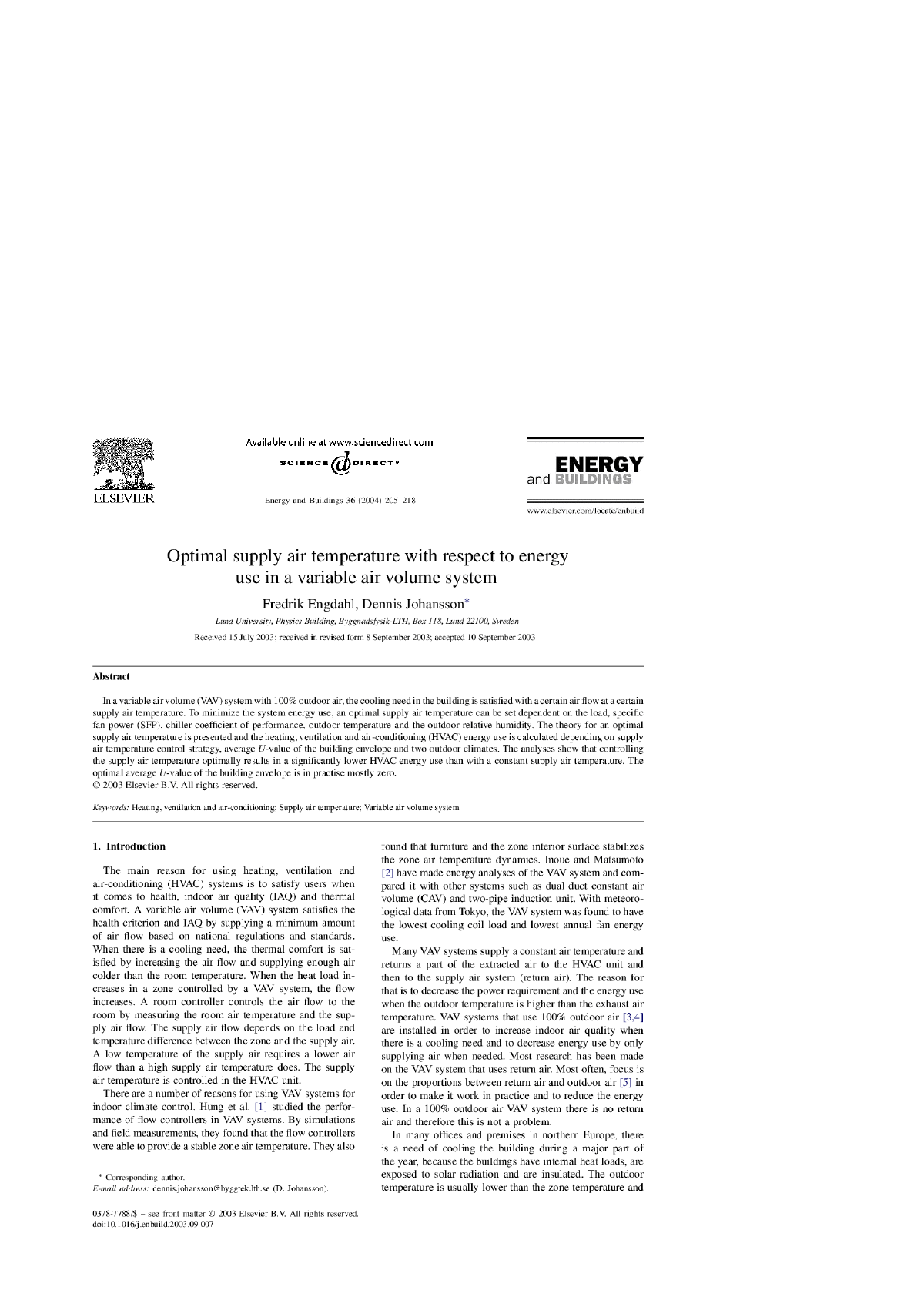
In a variable air volume (VAV) system with 100% outdoor air, the cooling need in the building is satisfied with a certain air flowat a certain supply air temperature. To minimize the system energy use, an optimal supply air temperature can be set dependent on the load, specific fan power (SFP), chiller coefficient of performance, outdoor temperature and the outdoor relative humidity. The theory for an optimal supply air temperature is presented and the heating, ventilation and air-conditioning (HVAC) energy use is calculated depending on supply air temperature control strategy, average U-value of the building envelope and two outdoor climates. The analyses show that controlling the supply air temperature optimally results in a significantly lower HVAC energy use than with a constant supply air temperature. The optimal average U-value of the building envelope is in practise mostly zero. © 2003 Elsevier B.V. All rights reserved.

变流量系统中送风温度的优化设计(英文)-图一
















一、工程概况:
本工程为厂区工程项目,总建筑面积100032m2...
二、冷热源:
1.空调冷热源采用两台水冷离心式冷水机组。
2.空调停止运行后,开启螺杆式风冷热泵机组或真空锅炉提供生活热水...
三、空调系统:
1.总经理办公室设一套变流量多联机系统。
2.车间空调按区域设置定风量一次回风全空气空调系统。
3.大空间采用吊顶式空调+独立新风。
4.空调水系统采用两管制混合式水系统,由单级泵水系统和双级泵水系统组合而成。车间采用单级泵水系统空调水系统采用两管制混合式水系统,由单级泵水系统和双级泵水系统组合而成。车间采用单级泵水系统...
四、通风系统:
1.每个防烟分区面积不超过 2000m2,每个防烟分区内排烟量按换气次数不小于6次/小时计。
2.大会议室采用机械排烟系统。
3.排烟量按防烟分区面积x60m3/h计算...
图纸共67张。

内容简介 一、工程概况: 本工程为厂区工程项目,总建筑面积100032m2... 二、冷热源: 1.空调冷热源采用两台水冷离心式冷水机组。 2.空调停止运行后,开启螺杆式风冷热泵机组或真空锅炉提供生活热水... 三、空调系统: 1.总经理办公室设一套变流量多联机系统。 2.车间空调按区域设置定风量一次回风全空气空调系统。 3.大空间采用吊顶式空调+独立新风。 4.空调水系统采用两管制混合式水系统,由单级泵水系统和双级泵水系统组合而成。车间采用单级泵水系统空调水系统采用两管制混合式水系统,由单级泵水系统和双级泵水系统组合而成。车间采用单级泵水系统... 四、通风系统: 1.每个防烟分区面积不超过 2000m2,每个防烟分区内排烟量按换气次数不小于6次/小时计。 2.大会议室采用机械排烟系统。 3.排烟量按防烟分区面积x60m3/h计算... 图纸共67张。 水管平面图 空调机房详图 空调冷热水系统流程图 主机房生活热水管平面图 主机房水管平面图 末端空调冷热水流程图



















